Website Development
Integrating your website with a CRM: the key to faster and more effective intakes

Lourdes Calderón
Lourdes Calderón | Oct 23, 2025 | 6 MIN READ
Oct 23, 2025 6 MIN READ

In a world where students do most of their research online, an educational institution's website becomes much more than a digital storefront: it is the heart of its marketing and student recruitment strategy. However, a website alone is not enough.
True efficiency comes when this website is intelligently connected to a CRM (Customer Relationship Management), which allows you to manage, organize and automate prospect information. The integration between the two not only improves the user experience, but also accelerates intake processes, optimizes the work of internal teams and multiplies conversion opportunities.
In this article we will explore in a descriptive way why this integration is so important, what are the specific benefits for educational institutions, the common mistakes in not implementing it and how to take the first steps towards a smarter and more effective digital ecosystem.
The website in educational institutions: the first point of contact
When a prospective student or their family seeks information about academic programs, scholarships or admission requirements, the first thing they do is visit the institution's website. At that point:
-
They assess the credibility of the institution.
-
They look for clear and reliable information about programs, costs, and admissions processes.
-
Decide whether they want to take the next step: request more information, schedule a visit or submit an application.
The website, therefore, must not only inform, but also capture data from these visitors and transform it into admissions opportunities. This is where CRM comes in.
What is a CRM in the educational context?
A CRM (Customer Relationship Management) is a platform designed to centralize contact information and manage the relationship with them in an organized and automated way.
In the educational sector, the CRM becomes a Student Relationship Management, allowing:
-
Record data from prospects arriving via web forms, content downloads or information requests.
-
Track every interaction: open emails, page views, interest in specific programs.
-
Automate reminders, personalized emails and workflows for the intake process.
-
Measure results: how many forms were completed, how many leads advanced to interviews, and how many ended up enrolling.
The key is to connect the website directly to the CRM so that all this data flow happens automatically and in real time.
The impact of not integrating website and CRM
Many institutions still handle inquiries through disconnected forms, spreadsheets or manual emails. This generates:
-
Duplication of efforts: teams must copy and paste information into different systems.
-
Human errors: incomplete or inconsistent data.
-
Late responses: a prospect expects immediate information, but the institution takes days to respond.
-
Lost leads: interested students who never receive follow-up.
In today's digital world, where immediacy makes all the difference, these failures can translate into hundreds of lost enrollments every year.
Benefits of integrating the website with a CRM
Integration transforms the website into an active recruitment engine rather than a simple repository of information. Among the main benefits are:
a) Centralization of data.
All forms, visitor logs and downloads are automatically stored in the CRM. This eliminates information fragmentation.
b) Faster response
The institution can set up automatic responses so that a prospect immediately receives personalized information after filling out a form.
c) Tracking the student's journey
The CRM shows which pages the user visited, which emails they opened, and what interest they expressed, allowing contextual tracking.
d) Personalization of the admission process
Not all prospects have the same interest. The integration allows you to send segmented messages according to the program, educational level or stage of the process they are in.
e) Better decision making
With centralized data, teams can measure key metrics:
-
Conversion rate of visitors to leads.
-
Percentage of leads that advance to interviews.
-
Programs with higher demand.
f) Scalability
As the institution grows, the integration allows handling a higher volume of requests without losing quality in follow-up.
Use cases in educational institutions
Case 1: Smart Forms
A student fills out a form on the "Psychology Degrees" page. The CRM automatically identifies his interest and assigns him to an email flow with more information about that program, available scholarships and application dates.
Case 2: Integrated chatbots
A chatbot on the website answers basic questions and, at the same time, saves the information in the CRM. If the prospect asks about master's degrees, the CRM labels the contact as "interested in graduate programs".
Case 3: Multichannel follow-up
The admissions team sees that a prospect opened an email about "campus visits" and a counselor immediately calls the prospect to invite him to schedule an appointment.
How to achieve effective integration
Integrating website and CRM is not only a technological decision, but also a strategic one. Here are the recommended steps:
1. Define clear objectives
What do you want to achieve with the integration?
-
Increase information requests?
-
Optimize the interview process?
-
Improve the conversion rate to enrollment?
2. Select the right CRM
Not all CRMs are designed for education. HubSpot, for example, allows you to create customized objects (students, applications, courses), which makes it easy to adapt to each institution's processes.
3. Connect forms and key pages
All web forms (contact, brochure download, application) should be integrated so that data flows directly into the CRM.
4. Create automated workflows
Examples:
-
Send an automatic welcome email when a form is filled out.
-
Notify an advisor when a lead visits the "Intake Process" page three times.
5. Train the team
CRM should not be viewed as a stand-alone software, but as a daily tool for marketing and admissions. Staff training is key.
6. Measure and optimize
Analyze results:
-
Which forms convert best?
-
Which emails generate the most clicks?
-
How long does it take for consultants to respond?
HubSpot's added value for educational institutions
As HubSpot partners, we know that one of its great advantages is its flexibility. Unlike other systems, HubSpot allows:
-
Custom objects: represent applications, scholarships or courses as their own entities.
-
Advanced automation: workflows that automatically send emails, assign leads and notify advisors.
-
Native integration with websites: forms and chatbots that connect in seconds.
-
Detailed reporting: clear metrics to evaluate marketing performance and admissions.
This makes HubSpot a powerful option for institutions that want to scale their operations and engage more students without increasing their administrative burden.
Conclusion
An attractive educational website is essential, but is not enough to ensure effective admissions processes. The real difference is its connection to a CRM, which allows you to transform visitors into qualified prospects and prospects into enrolled students.
Integrating the two tools is the path to faster, more efficient and personalized admissions. For institutions looking to grow and differentiate themselves, this integration is no longer optional: it is indispensable.
TABLE OF CONTENTS
Stay Updated with Our
Latest Posts
Subscribe now to receive the freshest content, insights, and updates directly in your inbox.

Recent Articles


2024 © The Orange Box Agency – All rights reserved



.png?width=90&height=90&name=facebook%20(1).png)
.png?width=94&height=96&name=Vector%20(1).png)